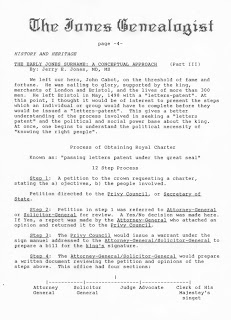 Governmental red tape has been present since the onset of...well, governments. Being sure to jump through all the correct hoops, and in the correct order, is part of the process. In May 1498, it was no different. John Cabot was about to leave England on his voyage to discover land not claimed by another nation. He of course needed a "letters patent" from the King. The process to receive a "letters patent" is not generally discussed in the history books. I thought it might of interest to those genealogist who would appreciate the process.
Governmental red tape has been present since the onset of...well, governments. Being sure to jump through all the correct hoops, and in the correct order, is part of the process. In May 1498, it was no different. John Cabot was about to leave England on his voyage to discover land not claimed by another nation. He of course needed a "letters patent" from the King. The process to receive a "letters patent" is not generally discussed in the history books. I thought it might of interest to those genealogist who would appreciate the process.The following pages are an outline of the 12 step process of obtaining a "letters patent" as it stood in early colonial history. Please remember that you can click on the pages to enlarge them. They are copied from The Jones Genealogist, Vol.X, No. 2, July/August, 1998, pp.4-5. Going through these steps would certainly keep one occupied for a certain period of time. It would also provide many opportunities to line someones pock, or to provide that extra favor.

Understanding this process certainly helps the genealogist to appreciate what our ancestors accomplished.